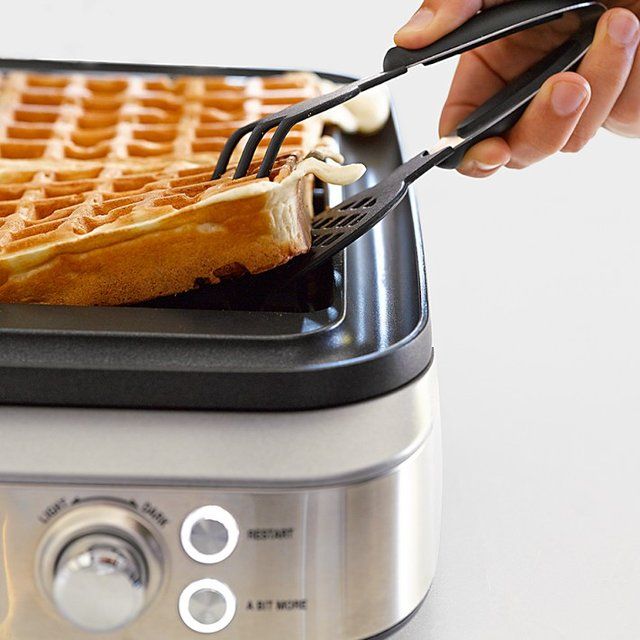Rutabaga baby food
Rutabaga (Swede) for Babies - First Foods for Baby
When can babies have rutabaga?
Rutabaga, when cooked until soft, may be introduced as soon as baby is ready to start solids, which is generally around 6 months of age.
Where does rutabaga come from?
Centuries ago, wild cabbage crossed with turnip in the northern fields of Asia and Europe, creating the cruciferous vegetable known as rutabaga—a loanword meaning “baggy root” in an old Swedish dialect. Trade brought rutabaga to the United Kingdom, where the vegetable was called Swedish turnip or simply “swede” as a nod to its assumed origin. Today, rutabaga is known as bryukva, gulrófa, kålrot, lanttu, and neep across the northern regions of Europe and Russia. Grocers tend to sell rutabaga that are about the size of a fist, though the root can keep growing when left to sweeten in the soil with the winter frost. Some grow so big that they are carved into lanterns at Halloween and Sauin (Samhain), the Celtic festival marking the transition from harvest-time to winter.
Is rutabaga healthy for babies?
Yes. Rutabaga is a good source of folate, B vitamins, notably B6 for cell energy, and potassium, contributing to baby’s nerve, muscle, and heart health.1 Like many root vegetables, it offers a good amount of fiber to support digestive health. It also contains alpha linoleic acid—a plant-based omega 3 fatty acid—to support a healthy brain and development. Rutabaga and its edible leaves contain glucosinolates, a unique group of compounds with anti-cancer properties that are also responsible for rutabaga’s touch of bitterness.2 3 The root contains vitamin C as well, which helps support baby’s immune system and aids in iron absorption from plant-based foods. Lastly, rutabaga has a touch of calcium for strong bones.
★Tip: Once harvested, rutabagas are often coated with inedible paraffin wax to help preserve them for long-term storage. Remove the wax before cooking by scrubbing or peeling the skin.
Is rutabaga a common choking hazard for babies?
Yes. For children under the age of five, raw, hard vegetables and fruits are high on the list of choking hazards, as they are tough to chew. To minimize the risk, peel and cook rutabaga until soft. As always, make sure you create a safe eating environment and stay within an arm’s reach of baby during meals. For more information on choking, visit our sections on gagging and choking and familiarize yourself with the list of common choking hazards.
Is rutabaga a common allergen?
No. Allergies to rutabaga are not common, though in theory, an individual can be allergic to any food. Individuals who are allergic or sensitive to other members of the cruciferous family, such as mustard greens and broccoli, could in theory be sensitive to rutabaga. 4 5
4 5
As with all new foods, introduce rutabaga by serving a small quantity and observe as baby eats. If there is no adverse reaction, gradually increase the quantity over future servings.
Recommended Guide: Introducing Allergens to Babies
Can rutabaga help baby poop?
Yes. Rutabaga offers good amounts of fiber, particularly insoluble fibers (which help bulk up bowel movements), as well as glucosinolates and phenols.6 7 8 9 Together, these components contribute to overall digestive health and bowel regularity. Note that pooping patterns can vary significantly from child to child. Be sure to talk to your pediatric healthcare provider if you have concerns about baby’s pooping and digestive function.
How do you prepare rutabaga for babies with baby-led weaning?
Every baby develops on their own timeline, and the suggestions on how to cut or prepare particular foods are generalizations for a broad audience. Your child is an individual and may have needs or considerations beyond generally accepted practices. In determining the recommendations for size and shape of foods, we use the best available scientific information regarding gross, fine, and oral motor development to minimize choking risk. The preparation suggestions we offer are for informational purposes only and are not a substitute for child-specific, one-on-one advice from your pediatric medical or health professional or provider. It is impossible to fully eliminate all risk of a baby or child choking on any liquid, puree, or food. We advise you to follow all safety protocols we suggest to create a safe eating environment and to make educated choices for your child regarding their specific needs. Never disregard professional medical advice or delay in seeking it because of something you have read or seen here.
Your child is an individual and may have needs or considerations beyond generally accepted practices. In determining the recommendations for size and shape of foods, we use the best available scientific information regarding gross, fine, and oral motor development to minimize choking risk. The preparation suggestions we offer are for informational purposes only and are not a substitute for child-specific, one-on-one advice from your pediatric medical or health professional or provider. It is impossible to fully eliminate all risk of a baby or child choking on any liquid, puree, or food. We advise you to follow all safety protocols we suggest to create a safe eating environment and to make educated choices for your child regarding their specific needs. Never disregard professional medical advice or delay in seeking it because of something you have read or seen here.
6 to 9 months: Offer peeled, cooked rutabaga wedges that baby can grab and munch on. Alternatively, serve mashed rutabaga, either on its own or as a binder for cooked grains, lentils, or seeds. If you’d like to serve rutabaga leaves, cook the greens from young plants (the leaves become bitter and tough as they age), then finely chop and stir into the mashed root, egg dishes, meatballs, or fritters. If you would like to offer a tough cooked leaf to baby, they can use this as a teether to help build a map of the mouth, but don’t expect anything to be chewed or swallowed.
If you’d like to serve rutabaga leaves, cook the greens from young plants (the leaves become bitter and tough as they age), then finely chop and stir into the mashed root, egg dishes, meatballs, or fritters. If you would like to offer a tough cooked leaf to baby, they can use this as a teether to help build a map of the mouth, but don’t expect anything to be chewed or swallowed.
9 to 12 months old: At this age, babies develop the pincer grasp (where the thumb and forefinger meet), which enables them to pick up smaller pieces of food. When you see signs of this development, try moving down in size and offering bite-sized pieces of cooked rutabaga. Try not to fret when you see baby trying to shovel food into their mouth: it is normal at this age and a good learning experience for the child as they understand the boundaries of their mouth. If you prefer, you can continue to offer cooked, mashed rutabaga.
12 to 24 months: Once a toddler has developed the ability to bite and tear with their teeth, raw rutabaga can be grated or cut into paper-thin slices, which you can serve on their own, dressed with a simple sauce, or mixed with other foods. You can also use cooked rutabaga (mashed or grated) in bean patties, dumplings, fritters, meatballs, and pancakes.
You can also use cooked rutabaga (mashed or grated) in bean patties, dumplings, fritters, meatballs, and pancakes.
Post our Nutrient Cheat Sheet in the kitchen for a quick reference to the nutrients that babies need most.
What are recipe ideas for rutabaga?
Rutabaga works well as a potato substitute in most recipes. As in dishes throughout Northern Europe and Russia, try pairing rutabaga with lamb, pork, or venison, as well as rich fats like butter, ghee, or olive oil. For a lighter meal, try raw, grated rutabaga in slaws with the bright flavors from apple and the rich nuttiness of hazelnut to balance the root’s slightly bitter flavor, as in the dish called kålrabi salat from Denmark and Norway. You can also serve rutabaga alongside sources of plant-based iron, like beans, dark leafy greens, lentils, nuts, quinoa, and seeds.
Recipe: Rotmos (Mashed Rutabaga and Potato)
Yield: 3 cups (720 milliliters)
Cook Time: 30 minutes
Age: 6 months+
Ingredients
- 1 small rutabaga
- 2 russet potatoes
- 4 cups (1 liter) low-sodium meat or vegetable stock (optional)
- 2 bay leaves (optional)
- 4 allspice berries (optional)
- 8 peppercorns (optional)
- 3 tablespoons (42 grams) unsalted butter
- salt to taste for adults and older children (optional: 12 months+)
This recipe contains a common allergen: dairy (butter). Only serve to a child after this allergen has been safely introduced.
Only serve to a child after this allergen has been safely introduced.
Directions
- Peel and discard the rutabaga and potato skins.
- Cut the roots into wedges. Try to cut them into similar sizes so that they cook evenly.
- Place the wedges in a pot, then add enough water to cover them by 2 inches. If you like, use pork stock instead of water for added flavor.
- If you like, add bay leaves, allspice berries, and peppercorns to the pot to season the root vegetables as they cook.
- Cover and bring the pot to a boil, then lower the heat to create a gentle simmer. Partially cover the pot, then continue to simmer the vegetables until a knife easily inserts into the thickest part of a wedge, about 15 minutes.
- Use a sieve or slotted spoon to transfer the roots to a mixing bowl. Discard the seasonings, but reserve the cooking liquid.
- Set aside a couple of wedges to serve to baby as finger food, then mash the rest with the butter to create rotmos.
 If you prefer smoother rotmos, stir in a spoonful or two of the reserved cooking liquid to loosen the mixture.
If you prefer smoother rotmos, stir in a spoonful or two of the reserved cooking liquid to loosen the mixture. - Scoop some rotmos and the reserved wedges onto baby’s plate. Exact serving size varies. Let the child decide how much to eat.
- Season rotmos for adults and older children with salt to taste. Let baby’s food cool until it’s warm, not hot.
- Serve and let baby try to self-feed. If you’d like to encourage baby to use utensils, pre-load a utensil with the mashed vegetables and place it next to the food for the child to pick up. Alternatively, pass a pre-loaded utensil or a wedge of rutabaga or potato in the air for the child to grab.
To Store: Rotmos keeps in an airtight container in the refrigerator for 3 days or in the freezer for 2 months.
Flavor Pairings
Rutabaga pairs well with apple, barley, butter, pork, oats, and venison.
Reviewed by
J. Truppi, MSN, CNS
V. Kalami, MNSP, RD, CSP
Kalami, MNSP, RD, CSP
K. Grenawitzke, OTD, OTR/L, SCFES, IBCLC, CNT
S. Bajowala, MD, FAAAAI. Board-Certified Allergist & Immunologist (allergy section)
R. Ruiz, MD, FAAP. Board-Certified General Pediatrician & Pediatric Gastroenterologist
- World Health Organization. (2012). Guideline: Potassium intake for adults and children. Retrieved March 24, 2021
- Wieczorek, M. N., Walczak, M., Skrzypczak-Zielińska, M., & Jeleń, H. H. (2018). Bitter taste of Brassica vegetables: The role of genetic factors, receptors, isothiocyanates, glucosinolates, and flavor context. Critical reviews in food science and nutrition, 58(18), 3130–3140. DOI: 10.1080/10408398.2017.1353478. Retrieved January 18, 2022
- Salehi B, Quispe C, Butnariu M, et al. (2021). Phytotherapy and food applications from Brassica genus. Phytother Res. 35(7):3590-3609. DOI:10.1002/ptr.7048. Retrieved January 18, 2022
- Blaiss, MS., McCants, ML., Lehrer, SB. (1987). Anaphylaxis to cabbage: detection of allergens.
 Ann Allergy Asthma Immunology, 58(4):248-50. Retrieved April 2, 2020
Ann Allergy Asthma Immunology, 58(4):248-50. Retrieved April 2, 2020 - Hermanides, H.K., Laheÿ-de Boer, A.M., Zuidmeer, L., Guikers, C., van Ree, R., et al. (2006). Brassica oleracea pollen, a new source of occupational allergens. Allergy, 61(4), 498–502. DOI:10.1111/j.1398-9995.2006.01055.x. Retrieved January 8, 2021
- Sikorska-Zimny, K., & Beneduce, L. (2021). The Metabolism of Glucosinolates by Gut Microbiota. Nutrients, 13(8), 2750. DOI: 10.3390/nu13082750. Retrieved January 18, 2022.
- Bunzel, M., Seiler, A., & Steinhart, H. (2005). Characterization of dietary fiber lignins from fruits and vegetables using the DFRC method. Journal of agricultural and food chemistry, 53(24), 9553–9559. DOI: 10.1021/jf0520037. Retrieved January 18, 2022.
- Tanaka S, Yamamoto K, Hamajima C, et al. (2017). Changes in Gut Microbial Ecology and Immunological Responses of Mice Fed the Insoluble Fraction of Brassica rapa L. that was Fermented or Not. Microbes Environ.
 32(3):268-274. DOI:10.1264/jsme2.ME17059. Retrieved January 18, 2022
32(3):268-274. DOI:10.1264/jsme2.ME17059. Retrieved January 18, 2022 - U.S. Department of Agriculture. Rutabagas, raw. FoodData Central. Retrieved January 18, 2022
Turnip Baby Food Turnip Recipes and Turnip for Homemade Baby Food, Age for Introducing Turnip to Baby
Learn about Turnips and Rutabagas for baby food and try some of our Turnips and Rutabagas baby food recipe ideas too.
When to introduce Turnips and Rutabagas to your baby – between 8-10 months
It is often recommended that turnip and/or rutabaga be introduced to babies between 8-10 months of age though introducing them earlier is possible. Many adults report that these vegetables give them gassiness and some bloating. In order to avoid possible tummy upsets in a baby who is prone to digestive issues, you may want to hold off on offering your baby turnip or rutabaga.
The Goodness of Turnip and Rutabaga
Turnips and Rutabagas are closely related – did you know that the rutabaga was created by crossing a cabbage with a turnip? The nutrients in both are essentially the same.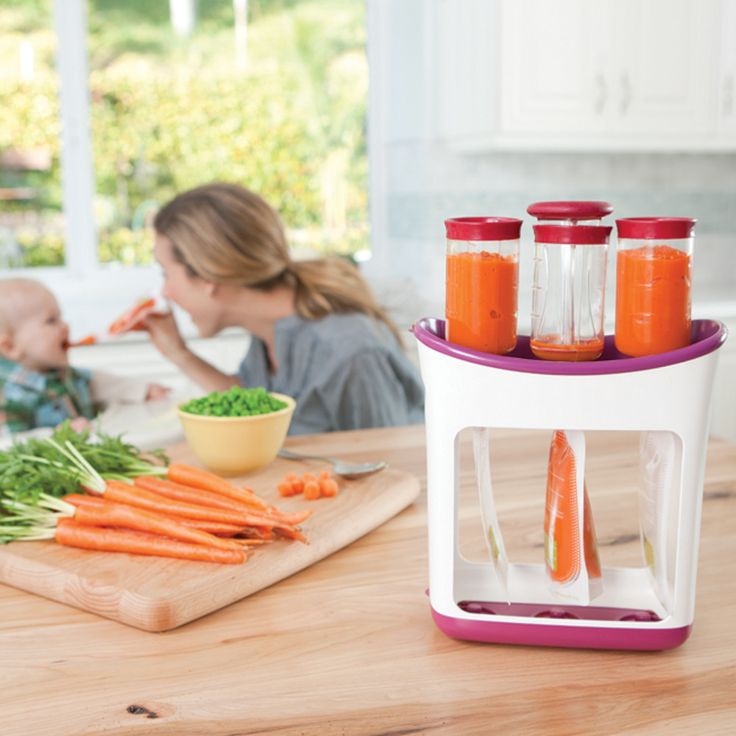 Both are high in Vitamin C and fiber (the greens are high in Vitamin A) and a good amount of protein too. Rutabagas are sweet while Turnips are less so.
Both are high in Vitamin C and fiber (the greens are high in Vitamin A) and a good amount of protein too. Rutabagas are sweet while Turnips are less so.
Turnips
| VITAMINS:Vitamin C – 26.7 mgVitamin K – 6.7 mcgFolate (important during pregnancy) – 21 mcgContains some other vitamins in small amounts. | MINERALSPotassium – 573 mgSodium – 16 mgCalcium – 58 mgPhosphorus – 108 mgMagnesium – 45 mgIron – .9 mgAlso contains small amounts of selenium, manganese, copper and zinc |
How to select and store parsnips for homemade baby food
According to the EWG, turnips and rutabagas are not one of the “dirty dozen” foods that are most highly contaminated with pesticides – purchasing organic is a personal choice. Due to their thick shell/peel, they are more protected from pesticides than other thin skinned veggies.
Rutabaga– Look for firm, smooth-skinned roots that feel heavy for their size. Rutabagas are generally displayed with a wax coating to prevent moisture loss.
Turnip– Look for small turnips which feel heavy for their size. Smooth and firm with fresh, green leaves.
Storing Rutabagas and Turnips:
Rutabaga — Refrigerate in a plastic bag up to 2 weeks.
Turnip — Wrap tightly and keep in a cool, well-ventilated area.
The best way to cook Turnip and Rutabaga
Rutabagas and turnips may be steamed, boiled or roasted. Roasting will not only help preserve more nutrients, it will also bring out the natural sweetness of the veggies. It is very important that you thoroughly cleanse and peel turnips and rutabagas prior to peeling and dicing/cubing them. These veggies are more often than not waxed prior to being shipped to the grocery store. It has been my experience that these 2 veggies will melt a lot of wax into the baking pan if you forget to wash and peel.
A Few Turnip Recipes for Baby
Turnip – Basic Turnip puree for baby
1. Wash and peel and cube turnip.
2. Place turnip in a pot with enough water to cover the cubes then steam/boil until soft and tender
3. Puree the turnip when finished cooking. Place into your choice of appliance for pureeing and begin pureeing.
4. Add water as necessary to achieve a smooth, thin consistency.
Turnip – Baby’s Roasted Turnips
1. Wash and peel then cube turnip.
2. Place turnip in a baking pan with approximately 2-3 inches of water and cover with foil.
3. Roast at 375F for approximately 20-30 minutes until golden and soft. Check on the water level.
* You may dice a few carrots and parsnips and add to the baking dish for extra color and yum.
* Sprinkle nutmeg and a bit of brown sugar in the cooking water and stir prior to roasting the turnip for a yummy flavor.
Mashed Turnips with Potatoes
1 large turnip – peeled and cubed
3 white potatoes – peeled and cubed (you may also use sweet potatoes if you wish. )
)
1/4 cup of milk
2 tblsp of butter
dash of turbinado sugar
pepper, garlic powder
Boil potatoes and turnips together in a large pot until soft and tender
Drain and then add the milk, butter and spices
Blend with a hand mixer or potato masher – keeping this a bit chunky will make for nice finger food.
Serve warm
My grandma always baked her mashed turnips – she would put the mix into a baking pan and then dot some butter on top, dash of cinnamon and sometimes cinnamon and sugar combined. Mom says that this should bake for 15 minutes until the top i golden brown.
Sweet Potato and Turnip Soup (Mr. Neep)
1 leek
1 medium red onion
1 or 2 large turnips
2 white potatoes
1 sweet potato
1 tblsp spoon fresh chopped rosemary
4 pints vegetable stock and/or water
pepper to taste
Cut off dark green tops from leeks, rinse very thoroughly, and dice. Chop onion, and saute leeks and onion in the bottom of a large soup pot in a little water until soft. Peel and dice turnips and potatoes, and add to soup pot. Add a little stock and stew for 5 minutes, stirring gently.
Peel and dice turnips and potatoes, and add to soup pot. Add a little stock and stew for 5 minutes, stirring gently.
Add the rest of the stock and the rosemary, and simmer for 15 minutes, or until the potatoes are fully cooked. Puree about half of the soup in a food processor or blender, and return to the pot. Season to taste with pepper, reheat, and serve.
Apple & Turnip Salad (adapted from Organics A-Z)
1 cup grated apple (2 or 3 apples)
1 cup grated turnip (we’d use rutabaga as it is more sweet)
2 to 4 tbs chopped parsley
1 tbs of olive oil
pepper, basil, nutmeg
Grate up your apple and turnip and steam gently for 10 minutes or until just tender. When cooled, empty into a large bowl and toss with olive oil and spices of your choice.
Foods Good to Mix With Turnip
Sweet Potato
Apples
White Potatoes
Chicken & Rice
Peaches
Lentils
Resources:
Wegman’s Veggies
Remember, always consult with your pediatrician regarding introducing solid foods to your baby and specifically discuss any foods that may pose allergy risks for your baby.
This site complies with the HONcode standard for trustworthy health information:
verify here.
SHARE ON FACEBOOK SHARE ON PINTEREST
Does the baby need turnips and rutabaga?. Big Change
Processing will not save
Infants and children under 5 years of age cannot digest turnips, radishes, turnips, and even more so turnips . These products lead to a violation of the normal function of the pancreas, and in the future - to diathesis (atopic dermatitis). The fact that rutabagas and turnips are boiled does not save the situation for . The lack of enzymes required for the digestion of fiber, which is part of the root crops, is not compensated by the hot processing of products. One of the arguments of parents who give their children turnips and rutabagas is that the child's daily stool is restored. Indeed, the presence of stool is a manifestation of the effect of digestion. But with proper nutrition, the process of absorption of vitamins and microelements, which give energy forces, must also take place. And the still far from perfect digestive system of children is not able to do this work. And it turns out that parents, as well as grandparents, who transfer babies too early to adult nutrition, with all the great love for them personally cause irreparable harm to their health.
And the still far from perfect digestive system of children is not able to do this work. And it turns out that parents, as well as grandparents, who transfer babies too early to adult nutrition, with all the great love for them personally cause irreparable harm to their health.
Only porridge can be better than porridge!
Man is not a titan of digestion at all. As for babies, infants, adolescents, their digestive system is only developing in the process of growth, and adults should not forget about this. If you are in doubt - to give or not to give a treat to a child, it is best to turn to time-tested practice, when the principle is put at the forefront: is nutritious, healthy, rational.
The cereals . In terms of calories, they almost do not differ from each other, so you have to choose according to the degree of manifestation of allergic reactions when they are used.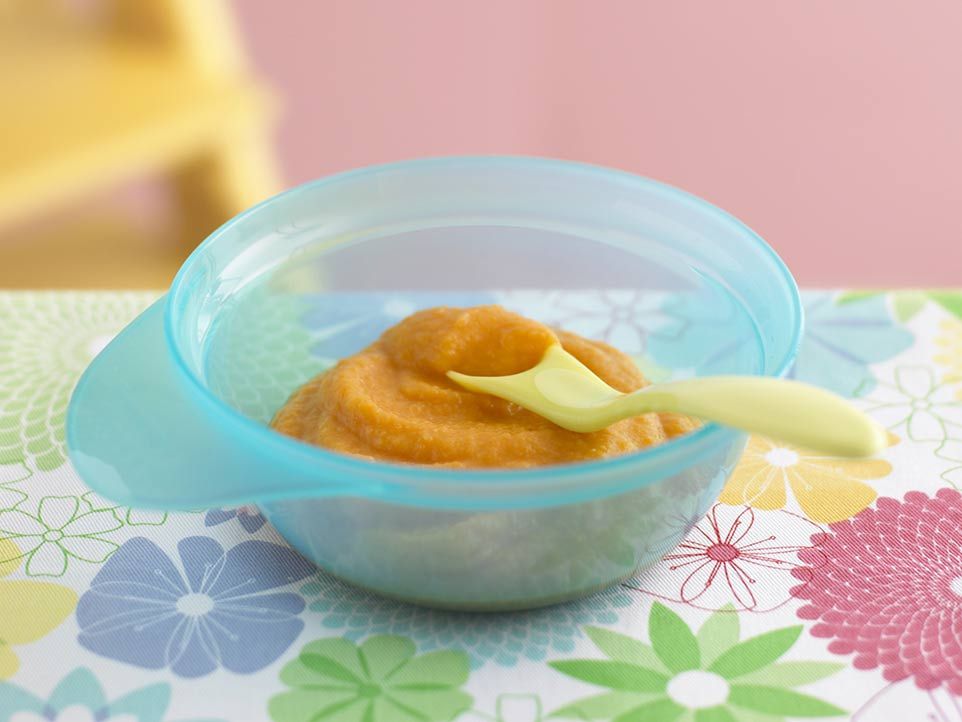 According to the content of essential amino acids, the most valuable are buckwheat, rice, oatmeal . However, oatmeal in children with allergies may exacerbate allergic reactions. Therefore, for allergy sufferers, oatmeal, as well as hercules and semolina can be replaced with millet and wheat.
According to the content of essential amino acids, the most valuable are buckwheat, rice, oatmeal . However, oatmeal in children with allergies may exacerbate allergic reactions. Therefore, for allergy sufferers, oatmeal, as well as hercules and semolina can be replaced with millet and wheat.
Photo by Natalia Goncharenko
Do not experiment on children!
Throughout history, people have searched for the perfect nutritional formula. It can even be argued that nutritional problems were solved in the same evolutionary way as society developed. We have observed a peculiar outburst of newfangled theories in recent times. They found their supporters of the idea of a raw food diet, separate nutrition and the like. And, unfortunately, doctors have to deal with the consequences of testing these ideas on children. To resist the "experimentation" of adults, sometimes kids are helped by an instinct laid down by nature. But fathers and mothers, as well as grandmothers and grandfathers, with enviable constancy, continue to harm the health of their loved ones with great love and unintentionally.
But fathers and mothers, as well as grandmothers and grandfathers, with enviable constancy, continue to harm the health of their loved ones with great love and unintentionally.
Unreasonable adults consider many substances useful and nutritious. For example, the same mushrooms that adults love in all forms simply do not linger in the baby's body. The baby's digestive system, even so imperfect, rejects them. But the protective mechanisms of a growing organism do not always work. There can be many reasons for this: the lability of metabolic processes, the immaturity of a number of systems, high susceptibility to infectious diseases, violation of environmental conditions, and the like.
Allergy comes from childhood
Unfortunately, preservatives, dyes and emulsifiers are added to juices and canned food. They can cause both allergic reactions and digestive disorders in both infants and older children. Already becoming an adult, a person may never guess that an allergic reaction to oranges or apple juice has been going on since infancy.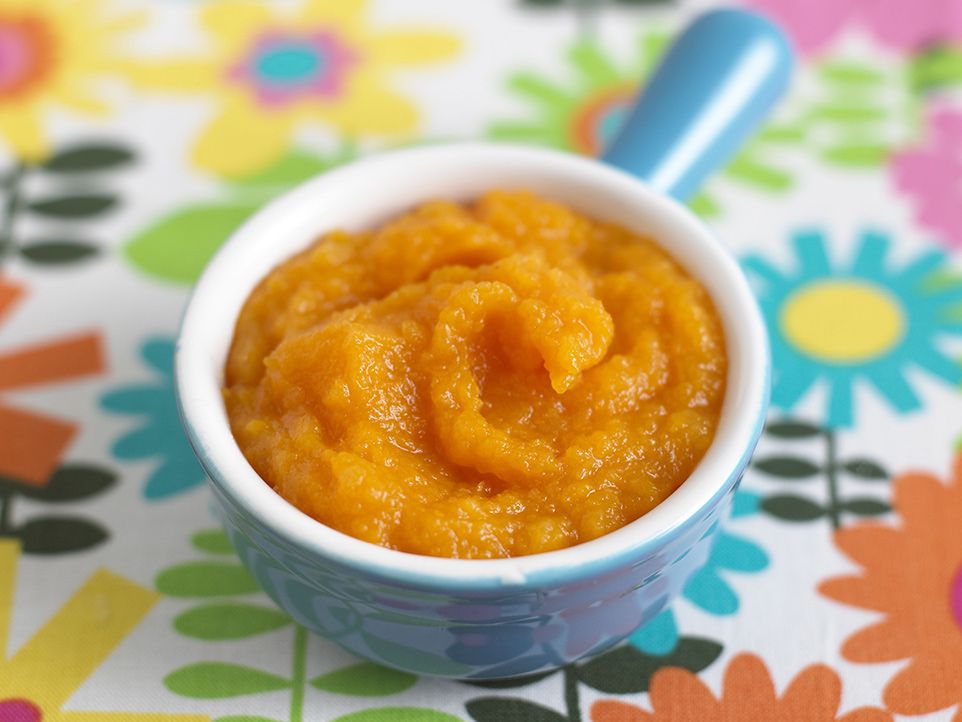 He does not suspect that the predisposition to this was laid down in the days of serene childhood. Therefore, it is better for caring mothers and fathers in the first year of a child’s life to replace canned meat with natural meat, and juices and purees with natural vegetables and fruits. But cereals are an important source of minerals, and the wider their range (for healthy children), the greater and more diverse the amount of amino acids and mineral salts entering the body.
He does not suspect that the predisposition to this was laid down in the days of serene childhood. Therefore, it is better for caring mothers and fathers in the first year of a child’s life to replace canned meat with natural meat, and juices and purees with natural vegetables and fruits. But cereals are an important source of minerals, and the wider their range (for healthy children), the greater and more diverse the amount of amino acids and mineral salts entering the body.
Many minerals are also found in legumes: beans, peas. And parents should also know that all adapted dry mixes contain cow's milk, and some of them contain cereal flour. Due to the fact that the acidity of gastric juice, the biliary system, the amount and composition of juice and pancreatic enzymes are individual for each infant, it is difficult to choose a nutritional mixture for each. And often allergic reactions to milk formulas appear earlier than to cow's milk. Powdered milk contained in mixtures is more allergenic than fresh milk. Hence the conclusion: mothers, cook porridge for your babies with fresh cow's or goat's milk diluted with water . By doing this, you will help children in a difficult and sometimes overwhelming “battle with surrogates” for them.
Hence the conclusion: mothers, cook porridge for your babies with fresh cow's or goat's milk diluted with water . By doing this, you will help children in a difficult and sometimes overwhelming “battle with surrogates” for them.
Who do you think is the best digester of food? It is known from zoology - these are snakes and crocodiles. Sharks and other inhabitants of the sea can be added to these, which often swallow their prey whole, while never suffering from indigestion and, of course, do not resort to medical services.
Snakes swallow their prey alive if it is small and does not offer strong resistance. Boa constrictors kill large and strong prey by winding the rings of their body around it. At the same time, the boa constrictor does not break the ribs of its victim, as many people think, because bone fragments can pierce the stomach or intestines of the snake. Due to the extensibility of the mouth and body, snakes can swallow prey that is 2-3 times thicker than themselves.
But these abilities also have limits: even a ten-meter boa constrictor or python cannot swallow an adult horse or cow. The digestive system of snakes allows them to digest their prey along with the skin and bones.
The largest of the reptiles are crocodiles, they reach a length of 6-8 meters. Their wide mouth is equipped with sharp and large teeth, which, like scissors, cut their prey - even large ones, such as a zebra or antelope.
With its powerful digestive system, the crocodile easily digests its prey, including hard shell turtles. It is unlikely that a doctor can boast that he treated a crocodile for gastritis, and no one saw a crocodile and its counterparts - an alligator or a caiman - allergic reactions to any product. True, crocodiles sometimes shed tears, but not out of pity for someone, but because of an excess of salt in the body. Therefore, they developed special glands that help the kidneys (as it turned out, they are an extremely imperfect apparatus in reptiles) and are located right next to the eyes.
When crocodiles have enough food and work their jaws at full strength, it seems as if the insatiable predator "is filled with bitter tears."
Carnivores are also selective in their choice of food. They eat only meat, and they are absolutely not interested in the best apples, oranges, tangerines and fresh cabbage.
Grass, hay, and various root crops favored by herbivores also require a lot of effort to digest. It is no coincidence that ruminants (cows, goats, sheep, etc.) have a multi-chambered stomach, consisting of a scar, mesh, book and abomasum.
Drawing by Yura Karelin, Belgorod
Ruminants consume a lot of rough vegetable feed, including root crops: rutabagas, turnips, carrots. Root vegetables are rich in fiber and are poorly digestible. For efficient digestion, numerous microflora (bacteria, ciliates, fungi) are located in the proventriculus of ruminants. The lack of primary chewing is compensated by subsequent chewing gums.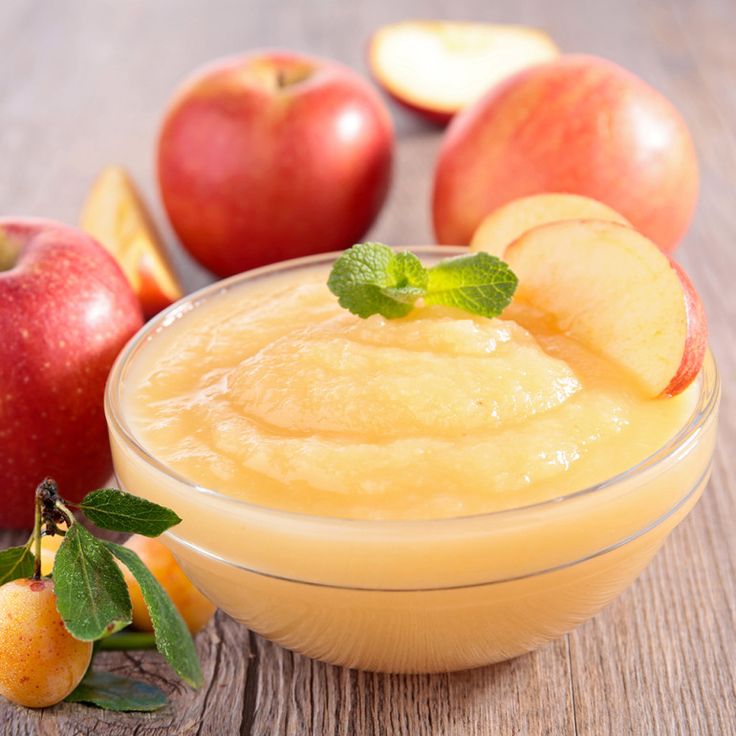 During the day, the animal can have from 6 to 10 ruminant periods with a total duration of up to 7 hours.
During the day, the animal can have from 6 to 10 ruminant periods with a total duration of up to 7 hours.
Olesya Rudenok, doctor in hygienic education, Belgorod Regional Center for Medical Prevention
Root crops in a child's diet - NTsZD
Root crops proper include carrots, beets, rutabaga, turnips, radishes, radishes, parsley and celery. Potato and sweet potato (sweet potato) are tubers.
Root crops are a source of dietary fiber, sugars, vegetable protein, and the content of vitamins and minerals in them is higher than in the fruits and leaves of other plants. Radishes, radishes, turnips, parsley roots and celery roots have a high content of essential oils, which limits their use in the nutrition of young children.
Among root crops, the most demanded carrot , which contains a lot of easily digestible carbohydrates, fiber and pectin, as well as essential oils, some essential amino acids and pigments necessary for the normal functioning of the organs of vision. . For baby food, carrots are useful primarily because of the high content in it of provitamin A, or carotene. This vitamin is also called the growth vitamin, and it is very important for babies, because it contributes to good vision, maintains the normal condition of the skin and mucous membranes. In addition to carotene, carrots contain B vitamins, vitamin C, K, PP, trace elements: iron, calcium, phosphorus, iodine. Carrots improve intestinal motility, the condition of the mucous membranes, accelerate the healing and regeneration of the skin. However, allergic reactions often occur on carrots, so it should be given to a child carefully, taking into account individual tolerance. It should be remembered that carotene belongs to the fat-soluble group of vitamins, therefore, for better absorption, it is good to add a little vegetable oil to carrots, and for older children - cream or sour cream.
. For baby food, carrots are useful primarily because of the high content in it of provitamin A, or carotene. This vitamin is also called the growth vitamin, and it is very important for babies, because it contributes to good vision, maintains the normal condition of the skin and mucous membranes. In addition to carotene, carrots contain B vitamins, vitamin C, K, PP, trace elements: iron, calcium, phosphorus, iodine. Carrots improve intestinal motility, the condition of the mucous membranes, accelerate the healing and regeneration of the skin. However, allergic reactions often occur on carrots, so it should be given to a child carefully, taking into account individual tolerance. It should be remembered that carotene belongs to the fat-soluble group of vitamins, therefore, for better absorption, it is good to add a little vegetable oil to carrots, and for older children - cream or sour cream.
It is better to “acquaint” a baby with carrots at the age of 6-7 months. When choosing carrots, pay attention to the appearance of the root. If the “head” of the root crop is green, it is better not to take it, because a dish made from such carrots will be tasteless. Most carotene is in the pulp closer to the edges, which is why it is colored brighter. But the pale yellow core should not be neglected either - it contains the pigment apigenin, which helps strengthen the heart muscle and relieve fatigue.
If the “head” of the root crop is green, it is better not to take it, because a dish made from such carrots will be tasteless. Most carotene is in the pulp closer to the edges, which is why it is colored brighter. But the pale yellow core should not be neglected either - it contains the pigment apigenin, which helps strengthen the heart muscle and relieve fatigue.
A useful vegetable for a child is beets . It is distinguished by a high content of easily digestible sugars (sucrose, fructose, glucose), fiber, organic acids, vitamins C, PP, group B, folic acid, carotenoids, bioflavonoids and mineral salts - potassium, sodium, magnesium, calcium, phosphorus and iron. The betaines present in beets (a group of phospholipids) contribute to better absorption of proteins, regulate fat metabolism, and improve liver and brain function. Mineral salts of calcium, phosphorus and iron regulate calcium-phosphorus metabolism and activate hematopoiesis. For medicinal purposes, beets are used to stimulate the activity of the intestines with a tendency to constipation. Beets can be safely added to the diet of babies older than a year.
Beets can be safely added to the diet of babies older than a year.
Unlike other vegetables, beets retain vitamins and other useful substances all year round. However, it should be remembered that beetroot can cause allergic reactions, and if it is in excess, diarrhea may develop. In addition, beets actively absorb and accumulate nitrates from the soil. Therefore, for a child, you need to choose environmentally friendly beets and give them in moderation. For young children, the amount of beets is approximately 60 g or 12 teaspoons per day.
Turnip has long been valued in Russia as a healthy and nutritious product. It contains indispensable elements that are necessary for human health. Turnip contains a large amount of vitamin C, which is stored in the root for a long time, contains vitamins B1, B2, PP, beta-carotene, E,. as well as iron, phosphorus, sodium, potassium, magnesium. Turnip is well boiled and absorbed in the gastrointestinal tract. However, the essential oils present in it do not allow the use of turnips in children of the first 2-3 years as the main product, but only in combination with other vegetables, as part of vegetable puree or in soups. Older children can consume the root crop both raw and after heat treatment.
Older children can consume the root crop both raw and after heat treatment.
Parsley root and celery root begin to be used only in the nutrition of children who have reached 2-3 years of age. In early childhood, it is recommended to use only the leaf part of plants as a source of vitamins (A, E, K, B6) and minerals (calcium, magnesium, potassium, iron), using them as seasonings for various dishes.
Celery root contains potassium, magnesium, iron and zinc. Parsley roots are rich in vitamins C, A, group B, minerals: potassium, calcium, magnesium, phosphorus, iron. Parsley leaves and roots supply rare elements to the human body: aluminum, lithium, vanadium, titanium, nickel, molybdenum, manganese.
Parsley and celery roots give dishes a distinctive flavor due to the presence of essential oils in them.
Rutabaga is a hybrid of turnip and cabbage, it is also called the Swedish turnip because it prefers the damp climate of temperate and northern latitudes. This root crop is rich in vitamins A, B, B6, P, minerals: calcium, magnesium, phosphorus, sodium, iron and sulfur. In addition, the swede contains sugar, protein, fiber and pectin. But most importantly, it is the undisputed leader among root crops in terms of vitamin C content. Due to its delicate structure, sweetish taste and rather high content of pectin, which promotes digestion, swede is an ideal food product. True, swede can cause excessive gas formation, so the baby should be given it carefully, starting from 8 months.
This root crop is rich in vitamins A, B, B6, P, minerals: calcium, magnesium, phosphorus, sodium, iron and sulfur. In addition, the swede contains sugar, protein, fiber and pectin. But most importantly, it is the undisputed leader among root crops in terms of vitamin C content. Due to its delicate structure, sweetish taste and rather high content of pectin, which promotes digestion, swede is an ideal food product. True, swede can cause excessive gas formation, so the baby should be given it carefully, starting from 8 months.
Rutabaga can be stored for several months without losing its useful properties, while cooking it retains its valuable substances, it is better to cook it in a double boiler.
Widely used in baby food potatoes . It is high in starch, potassium and vitamin C, as well as vitamins P, B group and bio-flavonoids, which improve the absorption of vitamin C and strengthen the immune system.
Potato tubers are well boiled, the product is easily digested, but in some cases it can increase gas formation in the intestines.



